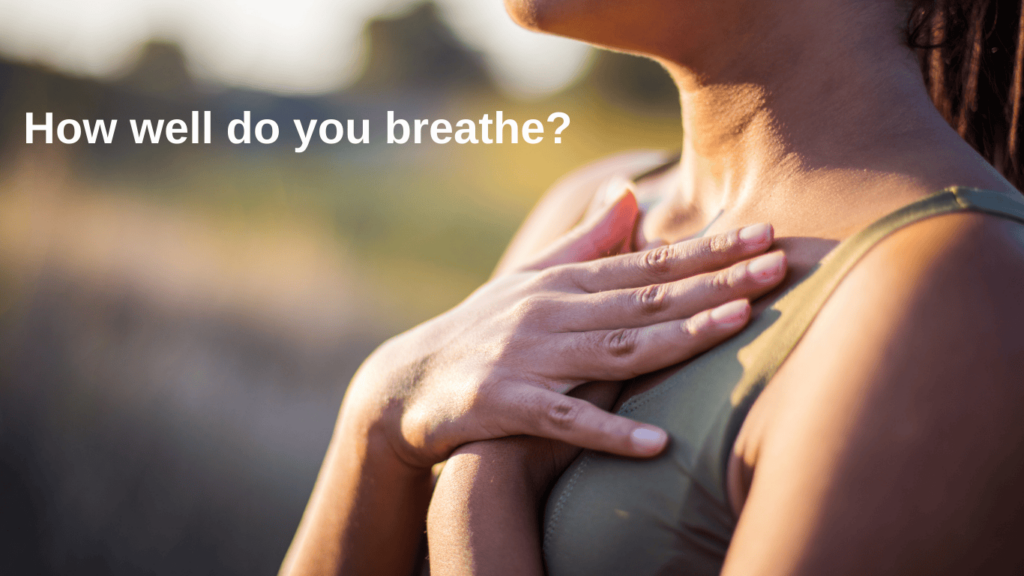
How we breathe is very underrated aspect of health but influences wellness greatly so it it’s important to know how you are breathing – be proactive not reactive.
What is it to breathe well?
Good breathing is key to maintaining good health and is rarely considered but can greatly impact how your body operates. A breath ideally should always be through your nose with ease, unless you are talking or performing hard out exercise.
The diaphragm and the lower ribs work together to gently draw air into the nose and then into the lungs
The nose warms and moistens the air aiding its delivery to the lungs, it regulates the incoming air and helps create nitric oxide (this has an anti-inflammatory effect and helps reduce the build-up of plaque and cholesterol in our blood.

Mouth breathing is classed as dirty breathing (snoring is also mouth breathing) as the nose has a special lining that collects 75% of the bacteria in the air allowing your immune system to deal with it and bogies also have an anti bacterial affect.
Breathe work being very important to wellness is why I may include this as part of your movement coaching so you have the correct breath work for right situation eg box breathing helps control anxiety, diaphragmatic breathing creates deep relaxation etc. Today we are reviewing light nose breathing known as the Buteyko Method. This method has a key role in promoting good breathing patterns and helps with many other processes in the body including the anti inflammatory mechanisms.
You will learn how to breathe well be given breathing exercises with essential oils (a personally chosen oil to help with your wellness plan) as well as either an essential oil treatment (proactive wellness and distress) or a clinical neuromuscular massage treatment to get you moving freely, feel rejuvenated, sleep may improve, thinking become clearer and more energy.
Test your breathing
The test is called a breath pause or controlled pause.
This gives you a baseline to how well you breathe and a way of monitoring how you are improving when doing 4 minutes of breath training per day.
The controlled pause measurement is the length of time you can comfortably hold your breath (without a forced hold and starting from gentle shallow breathing) when finishing the controlled breath you should not be gasping for air and be able to return to gentle shallow breathing. The best time to test the controlled pause is first thing in the morning on waking ( as your breath is normally shallow and gentle throughout the night and on waking).
You will need a stopwatch or the ability to time your controlled pause. Make sure your breathing is gentle, taking a small shallow breath in and out via your nose. When this is achieved pinch your nose and keep your mouth closed so no air can enter your lungs. Start the timers as you grab your nose until you feel the need for air (this may be a flutter of the throat or diaphragm) As this happens stop the clock and make note of the time. When you remove your hand breathing should be slow and comfortable as before starting measuring (if this is not the case you have held your breath too long and the measurement will be inaccurate).
Research shows that a healthy control pause measurement is more than 40 seconds. How well did you do?
Here are some tips that will help:
- Try and breathe through your nose at all times
- Breathe gently
- Yawn with your mouth closed
- Try not to sigh
- And most importantly practice your breathing
- Avoid high intensity exercise if controlled pause is less than 20 seconds
- Digestion increases breathing rate so alway do controlled pause on empty stomach
Patience is needed for breath work as it can take up to 6months to achieve a good controlled pause.
Please contact me to discuss this further or book appointment (Masterton online)


